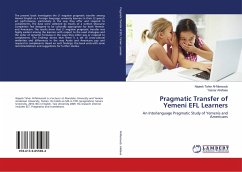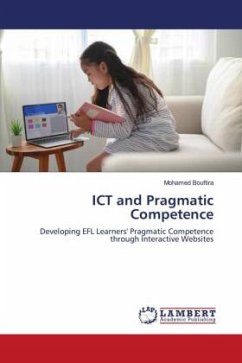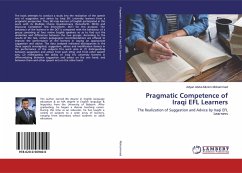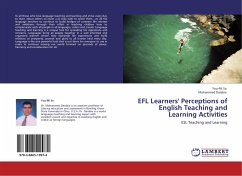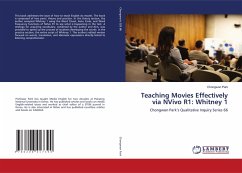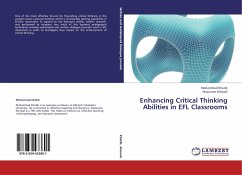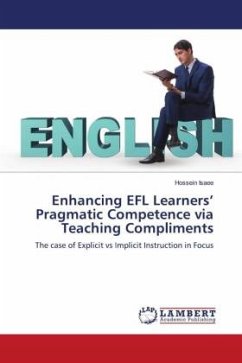
Enhancing EFL Learners' Pragmatic Competence via Teaching Compliments
The case of Explicit vs Implicit Instruction in Focus
Versandkostenfrei!
Versandfertig in 6-10 Tagen
60,99 €
inkl. MwSt.

PAYBACK Punkte
30 °P sammeln!
One of the main causes of learners' non-target-like pragmatic performance is the misleading or incomplete input provided by pedagogical materials. As literature suggests, the classroom context is where pragmatic instruction can occur, and literature abounds with the fact that explicit instruction of the target language pragmatic rules is effective in acquiring pragmatic competence. The two approaches of explicit and implicit instructions are different in terms of the degrees of explanations provided in the class. In explicit instruction, learners are provided with rule explanations during inst...
One of the main causes of learners' non-target-like pragmatic performance is the misleading or incomplete input provided by pedagogical materials. As literature suggests, the classroom context is where pragmatic instruction can occur, and literature abounds with the fact that explicit instruction of the target language pragmatic rules is effective in acquiring pragmatic competence. The two approaches of explicit and implicit instructions are different in terms of the degrees of explanations provided in the class. In explicit instruction, learners are provided with rule explanations during instruction. In other words, in explicit method of instruction, various classroom techniques are employed to focus learners' attention on structures and forms. In contrast, implicit instruction does not include any explanation of pragmatics or metapragmatic rule provision and refers to methodological possibilities which enable students to infer rules unconsciously. In the current book, the teacher-researcher has tried to examine the effectiveness of each method of instruction (i.e., explicit and implicit) in raising EFL learners' awareness of pragmatic.



